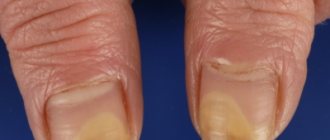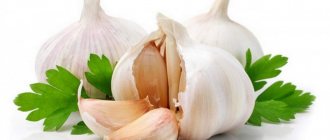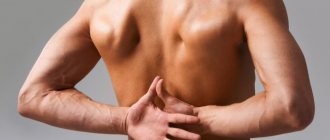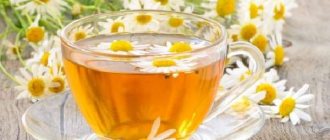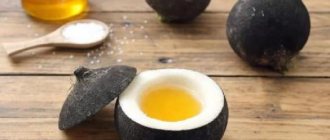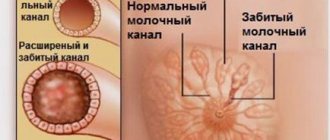Pathogenesis of the disease
With an excessive intake of purine compounds from food, their gradual accumulation occurs.
In particular, the course of the disease worsens against the background of renal failure. Example: purine compounds are supplied in normal quantities, but the kidneys cannot cope with the elimination of their metabolite - uric acid, so it gradually settles in the internal organs and joints. The cause of the pathology is quite easy to diagnose by performing a complete biochemical blood test. Most often, gout occurs in people who lead an unhealthy lifestyle. The typical patient is an older man, between 40 and 60 years of age, who regularly drinks alcohol and eats fatty foods. Usually, when examined, such a person is diagnosed not only with gout, but also with obesity, diabetes, arterial hypertension, and hypercholesterolemia (lipid metabolism disorder).
Due to hormonal characteristics, women of reproductive age are much less likely to encounter this disease. After menopause, the incidence of gout in women increases. This phenomenon is partly influenced by both poor nutrition and decreased kidney function. According to statistics, gout affects approximately 9% of the living adult population on the planet, so this disease is a common disease.
When is surgery needed?
Surgical treatment of gout is rarely performed. Brief description of possible surgical interventions and indications for them:
- Removal of tophi is required when they are severely overgrown or inflamed.
- Opening the joint cavity, draining purulent cavities. An autopsy is indicated in the presence of purulent complications of gout (cellulitis, bursitis, arthritis).
- Joint endoprosthetics. This operation is performed in patients with severe gouty lesions of large joints (hip, shoulder, knee).
Most cases of gout can be successfully treated with conservative methods.
It takes about a week for arthritis to subside. Anti-relapse treatment is carried out in long courses for life: this can be either following a diet or a diet with basic medications.
Causes
There are two causes of the disease:
- A decrease in the excretory function of the kidneys, due to which uric acid is not excreted in the required volume, and gradually accumulates in the joint capsules and internal organs.
- Excessive intake of purine compounds into the body through food and drink, which leads to their accumulation in the body.
If the first factor is associated with serious disorders in the body that lead to kidney disease, then the second is with an incorrect lifestyle and heredity. Therefore, it is important to take into account all the predisposing factors that contribute to the appearance of gout in older age:
- The presence of inflammatory processes in the kidneys - glumerulonephritis, pyelonephritis. Without proper treatment, these diseases can cause deterioration in organ function in the future, which will negatively affect the glomerular filtration rate.
- Arterial hypertension. High blood pressure negatively affects the condition of the vascular wall, impairs kidney function, which leads to the accumulation of uric acid in the future.
- Obesity. It is usually associated with poor diet and is a provoking factor not only for gout, but also for metabolic syndrome.
- Sedentary lifestyle. Against the background of physical inactivity, metabolism slows down, so with age, the risk of metabolic disorders, including gout, increases.
Separately, it is necessary to consider the factor of malnutrition, which is key in the pathogenesis of the disease if the patient does not have renal failure. Gout appears in people who eat fatty, fried and meat foods, and often drink low-alcohol drinks.
What foods contribute to the appearance of excess uric acid in the body:
- Fatty meat, fish, fried mushrooms.
- Extractive substances – broths from meat, fatty poultry, seafood, mushrooms. Also, many types of leafy vegetables are classified as extractives, as they are rich in oxalic acid - cilantro, onions, garlic, parsley, dill, sorrel and spinach.
- Many types of greens contain high amounts of oxalic acid, which negatively affects kidney function and promotes the accumulation of uric acid in the body. Such products include sorrel, spinach, onions, citrus fruits, parsley and dill.
- Meat by-products - liver, lungs, heart, stomachs, kidneys.
- Alcohol. Without exception, all alcoholic drinks contain large amounts of purine compounds. The record holders in this regard are two drinks – wine and beer.
- Legume products - peas, chickpeas, lentils.
- Carbonated sodas, commercial packaged juices, tea, coffee and cocoa are also high in uric acid.
- Sweets include chocolate, cream, and pastries.
How to eat to prevent a gout attack, list of foods:
- The best source of animal proteins is lean chicken, turkey, rabbit, and eggs. Red and fatty meats are prohibited - duck, pork, beef, lamb.
- Dairy products include cheese, cottage cheese, kefir, and skim milk.
- Recommended sources of carbohydrates are cereals. Rice, buckwheat and pearl barley porridge are ideal.
- Green leafy vegetables containing large amounts of oxalic acid are excluded from the diet, but a safe source of greens is added - tomatoes, eggplants, cucumbers.
- You can use any fruit source except citrus fruits.
- For sweets, honey, marshmallows, marmalade, dried fruits are suitable - instead of chocolate products and pastries.
- Drinks allowed include herbal tea, compote, uzvar, and rosehip infusion. You should completely avoid alcohol, coffee, cocoa and black tea.
- Recommended fats are vegetable fats, which include unrefined oils, nuts, and avocados. Animal fats and trans fats should be avoided.
In addition to a properly formulated diet, the patient should drink a lot of water, at least 1.5 liters per day, so that the kidneys can remove more uric acid from the body. You should not starve, it is recommended to eat in fractional portions, but often. If the stage of the disease is not advanced and is corrected only by dietary nutrition, you can use traditional medicine recipes. In advanced cases, the patient is prescribed medications. The use of home recipes should be discussed with your doctor.
Tinctures
To prepare tinctures, use vodka without dyes and taste improvers or 96% ethyl alcohol diluted with water in a 1:1 ratio. For people with dry or sensitive skin, it is better to take olive, sunflower, corn or flaxseed oil as an extractant. To prepare the tincture, you need to collect fresh plant materials from the beginning of spring and put them in a glass or ceramic container. These are plantain leaves, shepherd's purse, St. John's wort, nettle, elecampane, thyme, calendula flowers, dandelion, chamomile.
When adding herbs, lightly compact them and add vodka or oil. After filling the container, it must be left in a warm, dark place for 2-3 months. The resulting dark green aromatic tincture should be rubbed into sore joints 2-3 times a day.
Herbal tincture with vodka.
Is it possible to treat gout with folk remedies?
The effectiveness of how to treat gout at home directly depends on several factors - the cause of joint pain and swelling, the stage of development of the disease. If a patient has genetic disorders or reduced production of certain enzymes in the body, it is impossible to do without taking medications. As an alternative, you can discuss with your doctor the possibility of additionally using medicinal herbs with a diuretic effect to remove excess uric acid from the body by drinking plenty of fluids.
If gout occurs against the background of metabolic disorders, autoimmune processes or rheumatism, then in this case they also focus on a medicinal solution to the problem of attacks of the disease. You can take folk remedies if the inflammatory process does not intensify and attacks do not occur for a long time, which indicates that a stable remission has been achieved. With the help of traditional medicine, you can stop a mild inflammatory process, because some herbs have an analgesic effect.
The most common cause of gout in older age is the abuse of fatty foods and alcohol. In this case, the use of traditional medicine methods is most appropriate, since many herbs have diuretic, anti-inflammatory and restorative effects. To normalize the condition, it is enough to eat right and use folk recipes, if the disease is not too advanced. In severe cases, you may need to use medications to help remove uric acid from the body. The dosage of the drugs is selected individually by the doctor, taking into account the high risk of side effects.
Menu for the week
Monday
- Breakfast - an omelette cooked in the oven or steamed, you can add 50 ml of milk + a couple of slices of bread, 150 g of vegetable salad.
- Lunch – minestrone soup (vegetable), 130 g of low-fat fish, steamed or boiled.
- Dinner – sautéed vegetables with zucchini and eggplants 300 g, a slice of bread.
Tuesday
- Breakfast – bulgur or oatmeal porridge with fruit or dried fruit.
- Lunch – pilaf of wild rice and chicken fillet without frying.
- Dinner – vegetable sauté with potatoes and low-fat cheese, baked in the oven, a slice of bread.
Wednesday
- Breakfast - yogurt with fruits and nuts.
- Lunch – cream soup of pumpkin, zucchini and potatoes, chickpea cutlets, you can add 2 teaspoons of pumpkin or flax seeds to the soup.
- Dinner – stewed cabbage with tomatoes, onions and turkey.
Thursday
- Breakfast – bulgur or rice porridge, can be boiled in water or water + milk, berries or dried fruits.
- Lunch – bean lobio, vegetable salad.
- Dinner – bulgur or wild rice pilaf with chicken breast and vegetables.
Friday
- Breakfast - cottage cheese or cheesecakes baked in the oven, fruit, 1 teaspoon of sesame seeds, 1 tablespoon of sour cream.
- Lunch – durum wheat pasta with seafood, vegetable sauce.
- Dinner – buckwheat with fish baked in the oven.
Saturday
- Breakfast – wheat porridge with a mixture of water and milk, dried fruits.
- Lunch – cream soup of vegetables, add flax seeds or pumpkin seeds, a piece of bread or crispbread.
- Dinner – vegetable sauté, seafood, boiled egg.
Sunday
- Breakfast - yogurt with fruits and nuts.
- Lunch – perlotto with vegetables and cheese.
- Dinner – stewed cabbage with vegetables and turkey meatballs.
Available methods of treating gout with folk remedies
In folk medicine, recipes are used for both external and internal use. What you can use:
- Compresses. This is an external method of using a remedy. Typically, the active substance is applied to gauze and applied tightly for an extended period of time. The result is an effective and long-lasting effect on the affected area. Compresses relieve tension, remove discomfort and swelling. Usually a compress is applied after intense physical stress, long walking, or when the weather changes. The simplest version of a compress without heating is cabbage leaf, plantain, burdock. You can also scald these plants in boiling water, dry them, rub them with alcohol and apply them under a gauze bandage. Leaves for compresses are also used in two ways - ground into a fine paste and mixed with a rich cream, applied to the skin. The second option is to grind the leaves until the juice comes out, mix with honey and apply to the affected area.
- Application is a physiotherapeutic treatment procedure, the essence of which is to apply active substances to the body that accelerate tissue healing, relieve inflammation, and trigger local regeneration. Usually hot clay, ozokerite, paraffin, and medical bile are used. Many of the medicinal components have an anti-edematous effect, which is useful for gout. You cannot use the application treatment method during an exacerbation, as hot components will intensify the inflammatory process, which will lead to a general deterioration of the condition. The procedure lasts about an hour, after which the remaining product is washed off with warm water and a moisturizer is applied to the skin.
- Alcohol infusions. Suitable for both external and oral use. Usually they take the required component, crush it and pour it with alcohol, and then leave it in a dark place to infuse for several weeks. After the specified time, the mixture is filtered, removing the remaining solid contents. Then, according to the instructions or recommendations, take the finished mixture in a small amount. In the case of gout, such methods of preparing medicinal products are usually not used, since alcoholic drinks are strictly contraindicated in the presence of this disease.
- Decoctions and teas. It is easier to prepare a decoction than a tincture, since you do not need to spend a lot of time on the recipe. Usually they take a dry herbal mixture, pour boiling water, leave for 15 minutes and take before or after meals. This is how tea is made. The broth should be boiled for half an hour in a water bath, strained and left to infuse for about an hour.
Physiotherapy
Physiotherapeutic procedures help to finally stop inflammation in the joints due to gout. They are prescribed exclusively after drug reduction of arthritis symptoms. In the acute period of the disease, any methods of physiotherapy are strictly contraindicated.
What methods are used:
- applications of paraffin and ozokerite,
- healing mud,
- UHF,
- magnetic therapy,
- electrophoresis,
- phonophoresis of drugs.
Traditional methods of treating gout - recipes
It is impossible to completely cure gout. It is possible to get rid of gout using symptomatic therapy, suppressing the signs of exacerbation. To eliminate joint pain, an integrated approach is recommended, aimed at removing uric acid in the blood and stopping attacks of gouty arthritis. An attack of gout usually occurs suddenly, so it is recommended to prepare solutions of home remedies in advance in case of a sharp deterioration in health. Ideal adherence to a low-purine diet and the addition of light physical activity are important.
You can treat gout on the legs with the following recipes:
- A simple compress of honey and salt. You need to mix a tablespoon of honey and salt in equal proportions, apply it to gauze and cover the area of the affected joint for several hours. The course of treatment is up to 10 days. It is best to apply the compress before going to bed.
- A compress of mustard and honey will help with severe pain. This is a popular remedy that helps relieve symptoms within 7-14 days if used regularly. You need to mix mustard powder and honey in equal proportions, adding a little soda. If the mixture is too thick, you can add a little liquid to make it easier to apply. The resulting mixture should be rubbed well in the area of the fingers of the affected joint. Then a thick layer of gauze is placed on top to warm the leg. The compress has a weak warming effect, so it is more suitable for chronic pain. The product must be used daily for two weeks.
- An oral infusion based on a lemon-garlic mixture will help avoid acute attacks caused by the deposition of uric acid salts. You need to take 4 lemons and 4 cloves of garlic, twisting them through a meat grinder. Then the mixture is poured with a glass of boiling water and left to infuse for three days in a dark place. After which the mixture is filtered and taken 3 times a day before each meal, 1 tbsp. spoon.
- To combat gout at home, it is useful to treat yourself with apple decoction. You need to put 4 medium apples in a pan and first remove the skin. Then pour the peeled fruits with a liter of water. When the water boils, you need to cook the apples over low heat for 15 minutes. It is required to drink at least 3 cups per day. The method is simple, although it will not help get rid of the disease forever, but it will significantly ease the course of joint damage.
- External tincture for a sore joint with bay leaf. You need to mix a teaspoon of crushed bay leaf leaves and pour in 100 g of ammonia, letting it brew in a sealed container for a week. Then the mixture is filtered and rubbed into the area of the affected joint. A single dose of the mixture is no more than 2-3 g. The product should be used once a day.
- Herbal mixture for joint pain in external form. You need to grind fresh plantain and wormwood into the porridge in equal proportions. In order for the plants to acquire the consistency of an ointment, you need to add 2 tbsp. spoons of butter. Then the plants are mixed again, and the ointment is applied to the area of the affected joint.
- To slow down the formation of tophi in the joint area, it is useful to use medicinal foot baths. It is enough to take a warm bath of water, adding 50 g of soda and a few drops of iodine. This mixture copes well with swelling in the joints. Foot baths are done daily before bed. The course of treatment is 3 weeks, after which a break is taken. If necessary, a series of joint procedures is carried out again.
- External remedy: apple cider vinegar ointment. It is necessary to mix apple cider vinegar 100 g undiluted and egg yolk. The components are mixed until smooth. It's easier to beat the mixture until a thick foam appears. Apply the ointment to the affected joint 3-4 times a day. The ointment should be stored in the refrigerator.
- Compress for joints based on sea coli. It is necessary to mix sea salt and plain flour in equal proportions, adding a tablespoon of water. The resulting mixture is rolled out into a thin layer of dough, and strips of the product are applied to the joint area. Wrap cling film on top and leave for several hours. The compress can be applied daily to the affected area for several weeks.
- Anti-inflammatory compress made from fresh fish. A folk recipe made from minced fish helps to cope with inflammation in the joint area. You need to take river fish, grind it into minced meat and apply it to the affected areas. You need to keep the compress on your leg all night. Duration of therapy – 1 – 1.5 weeks.
- Celery infusion for oral use. It is necessary to chop the celery roots and pour 1.5 liters of boiling water. The mixture in the pan is covered with a towel and left for 4 hours. You need to drink the infusion before meals, a tablespoon 3 times a day. The product is stored in the refrigerator.
- You need to boil 3 potatoes with skins, after thoroughly washing the root vegetables. The potato broth should be left to steep for several hours after it is ready. Next, you should drain the top layer and drink 100 g of the mixture 2 times a day. Duration of administration is up to two weeks.
How to relieve pain during an acute attack of gout?
For acute gouty arthritis, anti-inflammatory treatment is carried out. The most commonly used is colchicine. It is prescribed for oral administration, usually at a dose of 0.5 mg every hour or 1 mg every 2 hours, and treatment is continued until:
- There will be no relief from the patient's condition;
- There will be no adverse reactions from the gastrointestinal tract or
- The total dose of the drug will not reach 6 mg due to the lack of effect.
Colchicine is most effective if treatment is started soon after symptoms appear. In the first 12 hours of treatment, the condition improves significantly in more than 75% of patients. However, in 80% of patients, the drug causes adverse reactions from the gastrointestinal tract, which may appear before clinical improvement or simultaneously with it.
When taken orally, the maximum plasma level of colchicine is reached after approximately 2 hours. Therefore, it can be assumed that its administration at 1.0 mg every 2 hours is less likely to cause the accumulation of a toxic dose before the therapeutic effect appears. Since, however, the therapeutic effect is related to the level of colchicine in leukocytes and not in plasma, the effectiveness of the treatment regimen requires further evaluation.
With intravenous administration of colchicine, side effects from the gastrointestinal tract do not occur, and the patient's condition improves faster. It is important to remember that the intravenous route of administration requires care and that the drug should be diluted in 5-10 volumes of normal saline solution, and the infusion should be continued for at least 5 minutes. Both oral and parenteral administration of colchicine can suppress bone marrow function and cause alopecia, liver cell failure, mental depression, seizures, ascending paralysis, respiratory depression and death. Toxic effects are more likely in patients with pathology of the liver, bone marrow or kidneys, as well as in those receiving maintenance doses of colchicine. In all cases, the dose of the drug must be reduced. It should not be prescribed to patients with neutropenia.
For acute gouty arthritis, other anti-inflammatory drugs are also effective, including indomethacin, phenylbutazone, naproxen, etoricoxib, etc.
Indomethacin can be prescribed for oral administration at a dose of 75 mg, after which the patient should receive 50 mg every 6 hours; treatment with these doses continues the next day after the symptoms disappear, then the dose is reduced to 50 mg every 8 hours (three times) and to 25 mg every 8 hours (also three times). Side effects of indomethacin include gastrointestinal disturbances, sodium retention, and central nervous system symptoms. Although these doses may cause side effects in up to 60% of patients, indomethacin is generally easier to tolerate than colchicine and is probably the drug of choice for acute gouty arthritis.
Drugs that stimulate uric acid excretion and allopurinol are ineffective in an acute attack of gout. In acute gout, especially when colchicine and non-steroidal anti-inflammatory drugs are contraindicated or ineffective, systemic or local (i.e. intra-articular) administration of glucocorticoids is beneficial.
For systemic administration, whether oral or intravenous, moderate doses should be given over several days as glucocorticoid concentrations decrease rapidly and their effect ceases. Intra-articular administration of a long-acting steroid drug (for example, triamcinolone hexacetonide at a dose of 15-30 mg) can stop an attack of monoarthritis or bursitis within 24-36 hours. This treatment is especially appropriate if it is impossible to use a standard drug regimen.

